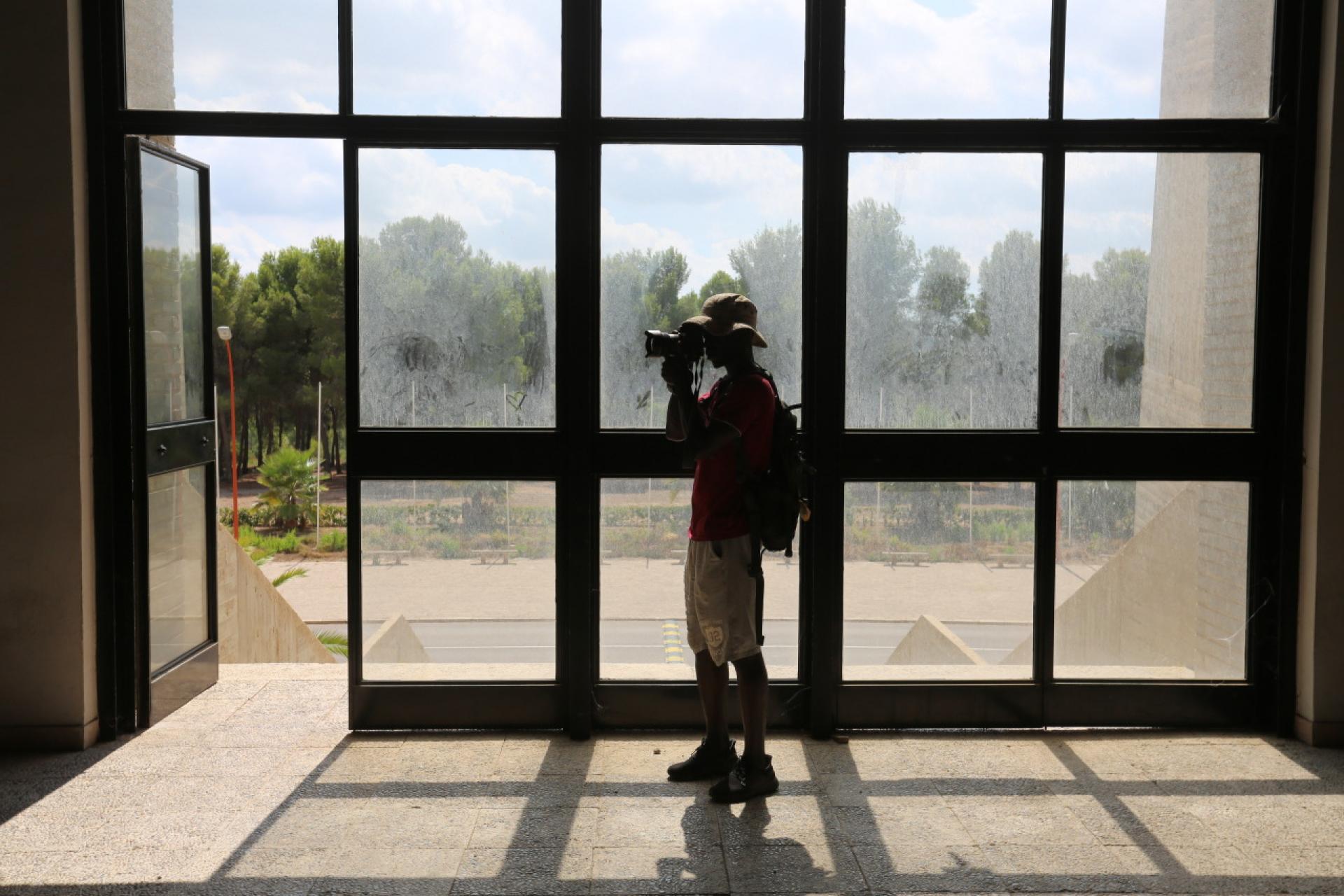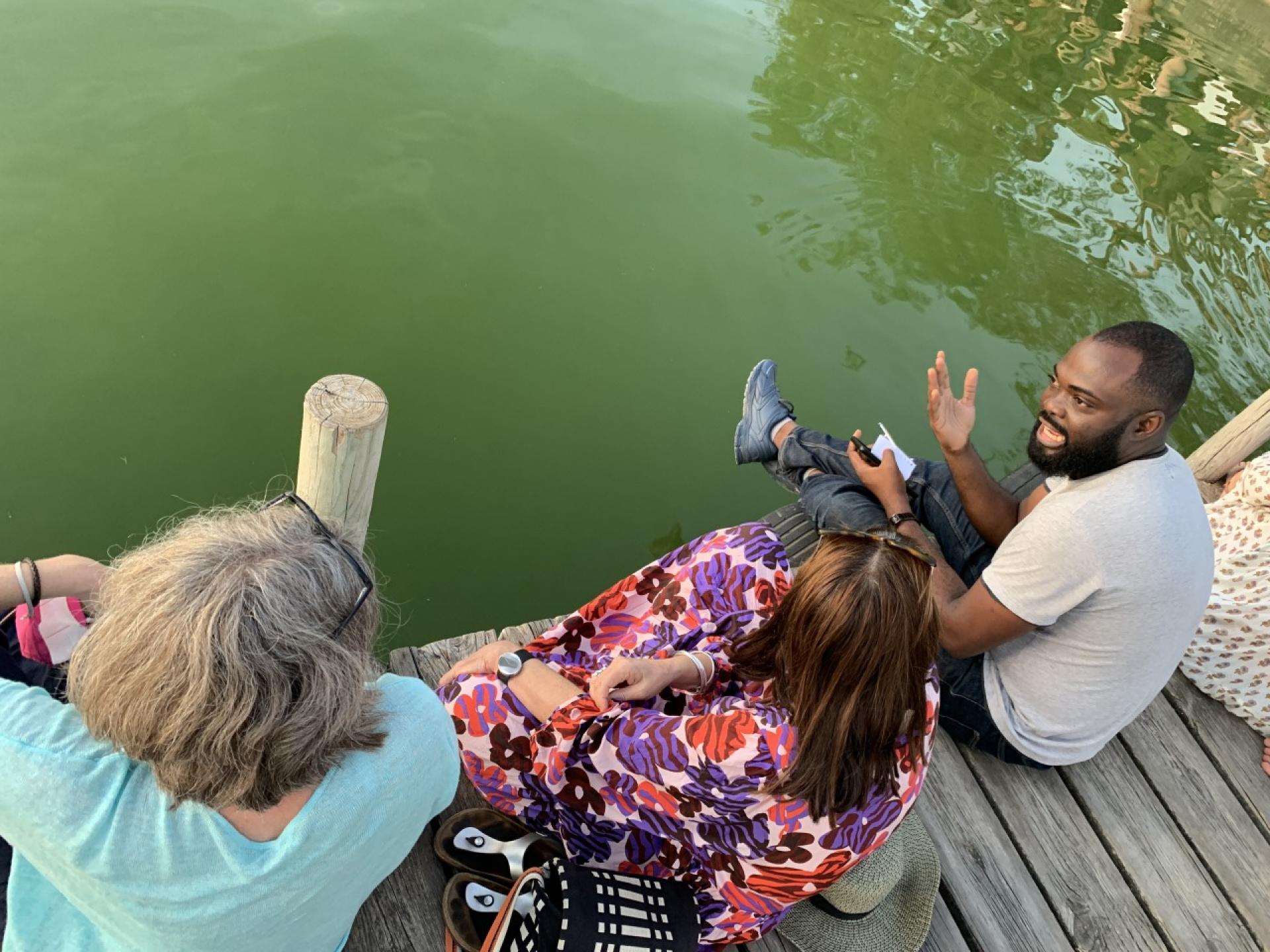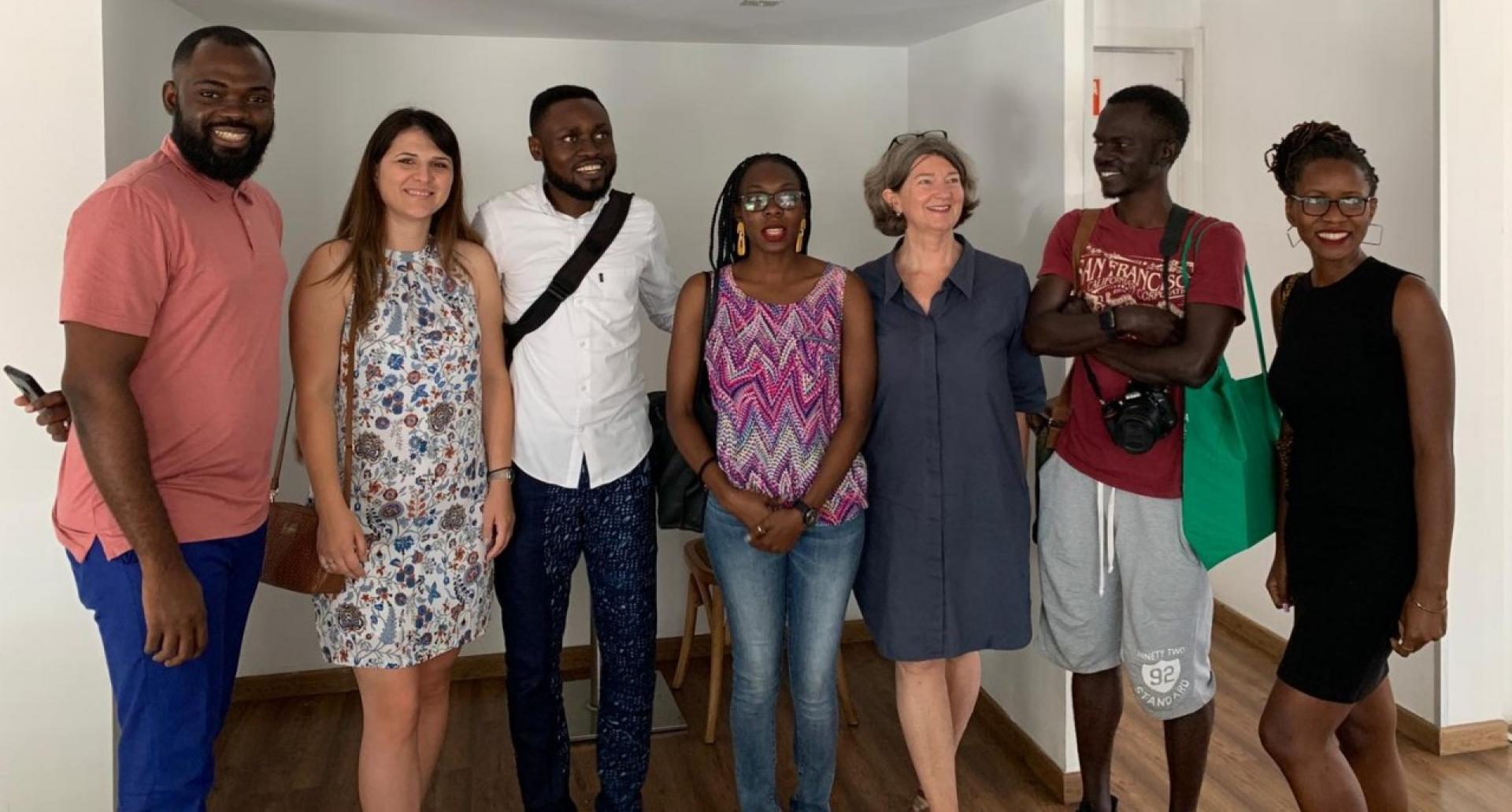Modernist Reflections From Valencia: Parallels With The African Continent
The Shared Heritage Africa fellows met in Valencia for the first time to reflect on the project. This is their report:
There is a saying in one of the African tribes: “We see with our hands”. Our experience in Valencia was an exciting way to learn [more] about heritage by actually experiencing it, through conversations at the 17th International Docomomo conference, as well as in walking through the old city which stands as a testament to heritage conservation. It is one thing to read about things, it is another to walk through those things in live encounters. The lessons from the latter stick better.

Cheste Workers University, a forgotten Modernist landmark near Valencia, photographed on an excursion during the Docomomo conference by Shared Heritage Africa fellow Bola Oguntade
This trip was our first opportunity to meet other fellows and project members in person. For us, engaging with each other’s work on Modernist buildings from our respective countries, showed us that, in many ways, Africa is a country. The forms and facades are similar and in regarding these similarities, we have also become sensitive to differences that give us a better understanding of what being modern is and what it means for Africa.

The architect Timothy Latim, a Shared Heritage Africa fellow from Uganda and an excellent photographer
Why Modernism, Why Now?
The overarching theme we got from the conference was ‘innovative functionality’: the contribution of notable individuals and groups (post-WWII) that led to a worldwide phenomenon that prioritised human-centred solutions to everyday problems.

This theme helped us tune our research practice to the following questions: How can the principles of our modernist heritage address the need for locally inspired solutions/technology to improve the quality of our living spaces? What can we learn—or unlearn—from how our modern buildings leverage tropical climate and local materials to attend to domestic energy needs in a scalable model? How might we synthesise these lessons with the lessons from other styles (traditional, vernacular, urban, etc.) that came before, after and around modernism?
The City of and Arts and Sciences, Valencia
In the tourist destination of the City of Arts and Sciences, we found an interesting parallel to what modernist architecture did in Africa. Built by the 20th century architects Félix Candela and Santiago Calatrava, the building complex poses a controversy, selectively choosing to respond to the environment part of the context and ignoring all other buildings around. The parallel to what modernist architecture did in Africa.

Lots of things to discuss
Like the rest of Valencia, the complex showcases how different architectural movements over the past centuries—from Neoclassicism to Gothic architecture—can sit well with one another. Walking around we thought, “Perhaps this, too, is what modernism is about. Perhaps, this is a possible answer to the question of what Africa could do to keep our Modern heritage alive.”
Written by Tubi, Justicia, Bola, Timothy and Christine. Edited by Immaculata
Shared Heritage Africa Fellows 2022

From left to right: Tubi Otitooluwa, Anica Dragutinovic (Docomomo), Bola Oguntade, Christine Matua, Uta Pottgiesser (Docomomo), Timothy Latim, Justicia Caesaria Kiconco